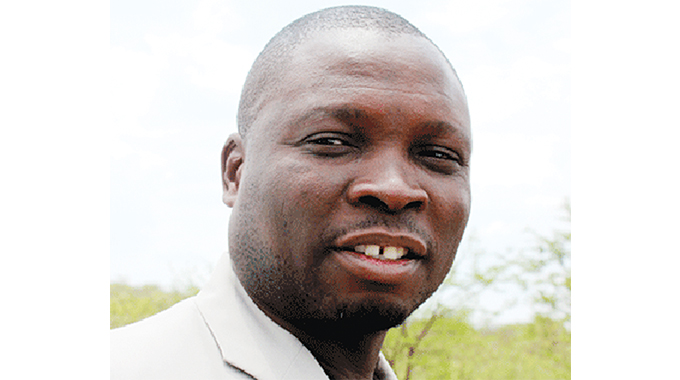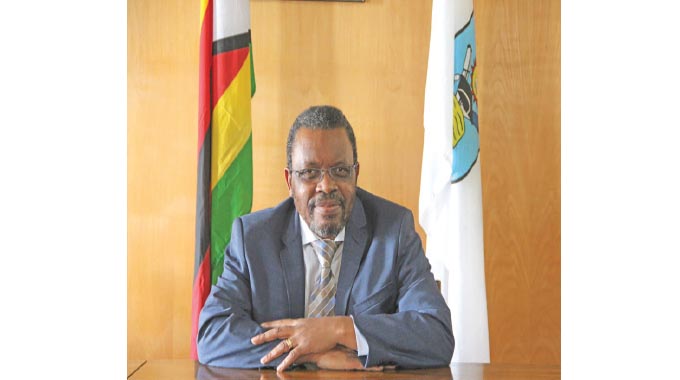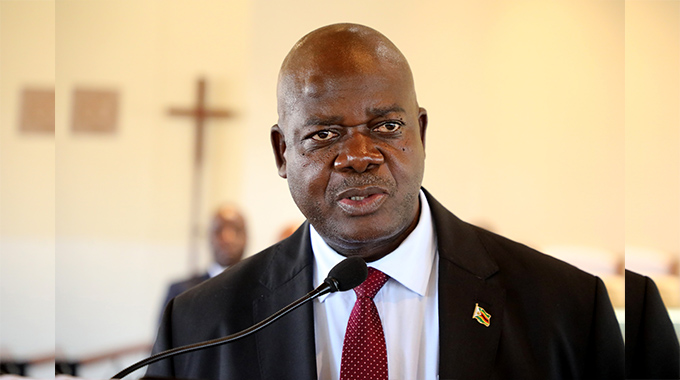National Disaster Risk Reduction Drills and Simulations launched

Bongani Ndlovu in Tsholotsho
YOUTHS are essential in preparing for disasters, especially in rural areas, as they have the energy and interest to help during natural or man-made calamities.
This was the sentiment from the community and the youth in Tsholotsho, Matabeleland North Province, during the national launch of the Disaster Risk Reduction Drills and Simulations.
The drills were done at Sawudweni Dam and Tshino Primary School.
The drills were held in Tsholotsho because it was one of the worst affected areas during Cyclone Dineo which destroyed villages and affected hundreds in 2017.
Matabeleland North Provincial Affairs and Devolution Minister Richard Moyo was the guest of honour during the event that was attended by community members and schoolchildren from the surrounding areas.
Others came from as far as Nkayi, as well as Chimanimani, Chipinge and Buhera in Manicaland Province.
World Vision Zimbabwe is the lead partner in the programme.
The implementing partner is Welthungerhilfe while Christian Blind Mission is the technical lead for disability inclusion across all districts in Zimbabwe.
In June last year, the organisations launched a project titled Strengthening Community Led Actions on Education and Disaster Preparedness (Scale DP) in five districts.
Princess Luphahla, a pupil at Tsholotsho High School, said youths were important for the sustainability of such programmes.
“This isn’t for this current generation but it is for our future. So as the elders of the future generation it is the best way to learn and keep their environment safe,” said Luphahla.
Brendon Ayanda Nkomo also from Tsholotsho High School said the youth are still young and have the energy to respond when natural disasters strike.
“Youths are the most active in society and they can respond quickly to disasters, unlike our parents and grandparents. When awareness campaigns are being done, youths can be used as they have the energy, rather than taking the older generation. The youth are critical thinkers and they can have the knowledge for a long time and pass it on to their children,” said Nkomo.
Mrs Sakheni Sibanda from Sawudweni area said she will impart the knowledge gained to her children and youth in her community.
“It’s very important for our children to learn and know the dangers of natural disasters in the area. Those who were here to learn were lucky as they can take that knowledge and get to understand how they can help when we face these disasters,” Mrs Sibanda.
Minister Moyo highlighted how important the youth are: “The youth were here and they now know what they can do.
They are the future and they will take that knowledge and use it in the years to come.”
During the simulation, the first was the sub aqua drill where police units demonstrated how they help marooned people during floods. It was held at Sawudweni Dam.
Thereafter the community and Government officials moved to Tshino Primary School and there a Communication Drill was held, where the community was shown the lines of communication in times of natural disasters
Spearheaded by the Civil Protection Unit (CPU), the drill demonstrated that the village head is the first person to be reported to, who then tells the District Development Co-ordinator where the disaster happened, who then activates the CPU.
EMA and the Forestry Commission did a fire drill. They educated people that the fire season is between April and November and demonstrated how to fight fires using tree branches.
In his keynote speech, Minister Moyo said the drills are important for communities.
“The prime purpose of the project is to strengthen local capacities in order to prepare for and adequately respond to natural and man-made emergencies. This ensures that affected learners in hazard-prone districts of Zimbabwe have access to include education in safe environments and the project dovetails well with mantra, ‘Disaster Risk Reduction is effective and efficient in a devolved environment.’”
Minister Moyo said it is key that the drills were held in Tsholotsho because it was affected by Cyclone Dineo.
“Matabeleland North Province communities face a wide range of natural and human-induced hazards. It is of great symbolic importance to hold this National Launch of Drills and Simulations in Tsholotsho, a district that was heavily damaged by Cyclone Dineo five years ago. The Cyclone negatively impacted all aspects of lives in the district,” said Minister Moyo.
He said climate change poses a real threat to national development and collective efforts to end poverty and boost shared prosperity.
Minister Moyo said under President Mnangagwa’s leadership, the Second Republic is working hard in a proactive manner to minimise the effects of climate change.
He said Government has enacted policies and put up institutions to deal with climate change and improve resilience to natural disasters this contributing to global efforts.
Schoolchildren provided entertainment during the event where they raised awareness about climate change, disaster management and natural disasters.
Christian, child-focused humanitarian aid agency, World Vision collaborating with Welthungerhilfe, Christian Blind Mission and various Government of Zimbabwe departments, has launched Strengthening Community-Led Actions on Education and Disaster Preparedness also known as the SCALE-DP project.
With an estimated €2,7million (US$3,2 million) funding from the European Civil Protection and Humanitarian Aid operations (ECHO), the project aims to improve disaster preparedness, early response and access to inclusive education in protective environments for 135 555 children, 40 025 women and 36 946 men.
The two-year project which began its operations on June, 1, 2021 is being implemented in five districts namely Chipinge, Chimanimani, Buhera, Tsholotsho and Nkayi.
These districts are disproportionately affected by a combination of disasters, including droughts, floods, cyclones, and hailstorms that affect access to education services and erode disaster preparedness capacities.
— Follow on Twitter @bonganinkunzi
·








Comments